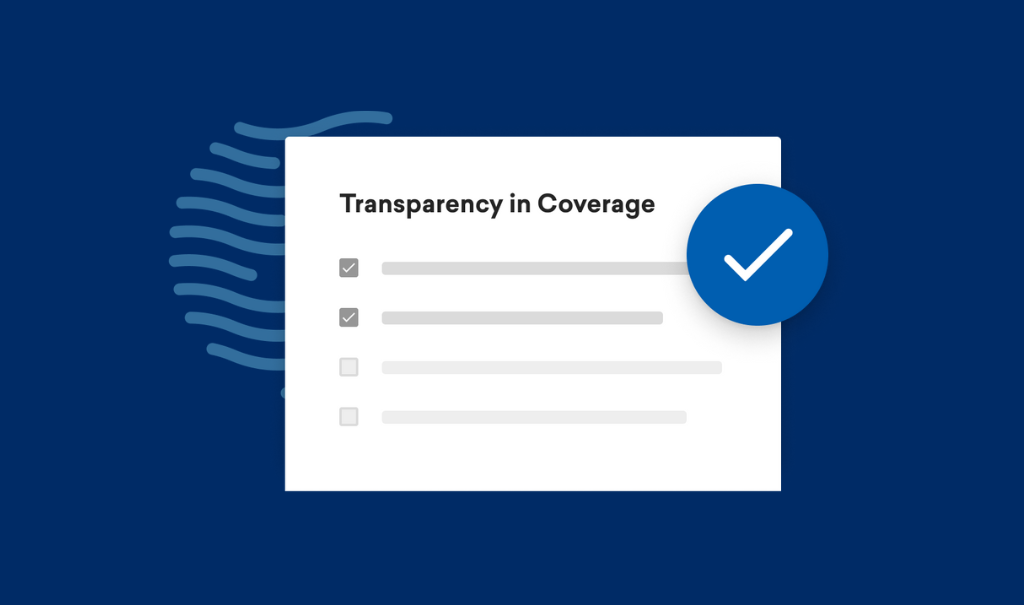
June 15, 2022
Five takeaways from our price transparency webinar

Bryana Allen
Bryana Allen is an expert content strategist and writer with over a decade of experience creating effective, engaging B2B and B2C content. She holds a masters degree in health communication and specializes in health and wellness content.
Amino recently hosted a round table webinar with industry experts on healthcare price transparency. What did we learn? Here are our top five takeaways.
Healthcare is quickly moving towards consumerism—and the new Transparency in Coverage Rule is the latest step in the paradigm shift.
On June 15, 2022 we hosted a roundtable discussion on how self-insured employers can prepare for the incoming price transparency requirements. Our panel included; Andrew Rosenthal, Chief Product Officer at Amino; David Vivero, Cofounder and CEO of Amino; Eric Hargan, former HHS Deputy Secretary; and Randy Pate, former CMS Deputy Administrator and Director. Eric and Randy were both on the team who wrote the requirements so needless to say, they are experts in this arena.
These four industry experts shared insights into the shifts happening within healthcare to drive more price transparency, why participation from the private sector is so crucial to healthcare innovation, plus what the penalties for non-compliance could mean for self-insured employers.
Here are our top five takeaways and what you need to know about healthcare price transparency.
1. Time’s up
Well, almost. Is your organization ready?
By July 1, 2022, self-insured employers must comply with TIC’s first requirement to make machine-readable files (MRFs) about pricing information publicly available. These files must include in-network rates, allowed amounts for out-of-network care, and drug prices. The data in these files are required to be updated monthly, and their purpose is to provide plan transparency to current and prospective participants. And while MRFs might not sound very sexy, they are the building blocks to supporting a better healthcare journey for Americans and guiding them to better care and better outcomes.
By January 1, 2023, self-insured employers must comply with TIC’s second requirement to offer an online price comparison tool. The tool must allow plan participants to compare costs for in-network providers on 500 of the most shoppable services.
The consequence of non-compliance is steep. Plan sponsors who do not comply with the rule may be subject to several enforcement actions, including paying a $100 penalty per day per violation. If you have 5,000 employees, that could be a $50,000 daily penalty for non-compliance.
2. TIC is here to stay
We’ve all seen regulations come and go, but price transparency is different from the usual top-down policy, plus it has bi-partisan support behind it. TIC stems from public outrage over healthcare costs and the individual impact healthcare can bring. Consumers are the ones driving the shift towards price transparency and healthcare consumerism. TIC is merely the first step towards giving them the purchasing power they want and the information they need to make their own health decisions.
3. Carrier solutions aren’t enough
It’s an unfortunate reality. While many administrative services only (ASO) insurance carriers or third-party administrators (TPAs) will provide cost transparency solutions for plan sponsors, they may not be able to quickly anticipate or adapt to regulation changes. This can result in administrative headaches for plan sponsors and their vendors. It can also cause self-insured plans to be non-compliant and face penalties. Even more, their highest priority is typically checking the requirement ‘box’ and not providing good care or guiding members to better outcomes. On that note…
4. Price transparency can lead to increased healthcare costs
It may sound counterintuitive, but it’s true. Studies show providing price transparency without quality information can increase healthcare delivery costs. Why? Many consumers falsely equate high-cost care with high-quality care and low cost with low quality. Because of this false assumption, they often choose more expensive providers or facilities when less expensive options will provide the same quality of care. The result of this choice is higher healthcare costs for the consumer and their health plan and no promise of better outcomes.
5. Quality information could be required in future regulations
Think about the last time you wanted to make a large purchase – the last time you were acting as a consumer. You likely read Google or Amazon reviews in addition to comparing costs on different websites. People want the same access to quality and price information when shopping for healthcare. And as we learned, they’re pushing for it. If TIC is a direct response to consumer demands, it’s safe to say quality transparency requirements could be next.
Need help complying with TIC?
Amino is here to help.
Our digital healthcare guidance platform gives members everything they need to make informed health decisions. This includes healthcare price transparency and healthcare quality transparency information that is specific to your health plan and network providers.
We’re your partner in healthcare cost and healthcare quality transparency, driving members toward the best healthcare outcomes while lowering healthcare spend for you and your members alike.
Connect with our Partnership Team
Want to learn how we can help your members transform their healthcare experience in 2025?